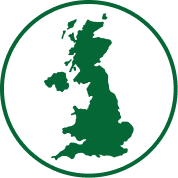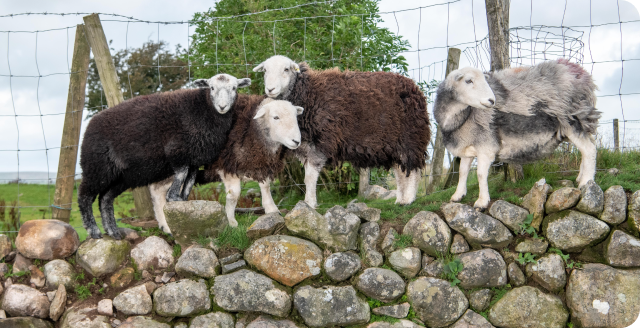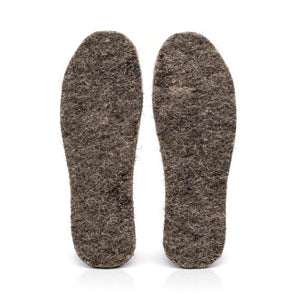Why is it important to provide bird boxes for wild birds?
It’s a sad fact that birds are declining in number in the UK, even species that we consider to be relatively common. There are many reasons for this but one of them is a reduction in suitable breeding sites. They’re pretty clever at finding secret out of the way places but these are becoming scarcer.
As a nation, we’re very generous with our bird food, and we love seeing them in the garden, but they also need the right places to nest. You can make all the difference to your local bird population by putting up a range of nest boxes. We’ve put a few in our fields as part of our Buy Land Plant Trees project and they have been very popular!
What species of bird is the Bird Box suitable for?
This bird nest box is a versatile “multi-nester” design, suitable for a range of bird species. It has a 30mm diameter opening that makes it suitable for most tit species, sparrows, nuthatches, redstarts and flycatchers. To make it even more versatile the top panel can be removed to convert it into an open-fronted nest box making it suitable for robins, blackbirds, wrens, and wagtails (or buy our special Robin and Blackbird open fronted nest box!).
Why include wool with the Bird Box?
If you’ve ever seen a bird’s nest you will know that they are beautiful structures with the body of the nest carefully woven together then lined with soft materials like moss, feathers and wool. Providing a bag of wool gives them a ready supply of nest lining material and encourages them to use the Bird Box. You can put the wool into a wire mesh bird feeder for the birds to peck bits out and line their nests with or just dot it around your garden and let them discover it. If you run out, don’t worry! We sell refill packs of wool.
You can also encourage birds to use the nest box by hanging out a variety of bird food close by such as peanuts, sunflower seeds and fat balls. You could even put out one of our Ground Feeder Sanctuaries for all those ground feeding bird species.
Where should I put the Bird Box?
First of all, make sure it’s in a good location that won’t be disturbed. It can be fixed to a tree, shed, post – anything that’s discreet and out of the way. Birds are clever at going in and out of the nest box just when no-one’s looking. Think about how you use your garden and whether the place you’re putting it is going to be disturbed when you go to hang out the laundry or do garden chores for example.
It’s also very important to make sure it’s not somewhere that can easily be accessed by predators, particularly cats. If you’re fixing it to a shed, for example, make sure the cat can’t just sit on the roof or garden wall and take up a passion for ornithology.
You want to make sure that you don’t put the nest box too high up. Bat boxes need to be as high as you can get them, which can be tricky, but most small bird species tend to nest nearer to cover from shrubs and bushy trees so having the box near this sort of cover is ideal.
If there isn’t a suitable location in your own garden then think about other locations that might be better suited to being used by wild birds.
Does the nest box need to be cleaned out?
The nest box has a removable panel at the front which means the box can be easily cleaned out after the birds have finished nesting. We find that with our own nest boxes the old nesting material tends to decompose over the year, and each spring the birds come and replenish it. So they don’t need too much maintenance.
However, over time they can get filled up so it’s a good idea to empty them out every few years. Remember, if there are any unhatched eggs remaining, they can only be removed between 1st August and 31st January. (Wildlife & Countryside Act 1981).
Why is it important to provide bird boxes for wild birds?
It’s a sad fact that birds are declining in number in the UK, even species that we consider to be relatively common. There are many reasons for this but one of them is a reduction in suitable breeding sites. They’re pretty clever at finding secret out of the way places but these are becoming scarcer.
As a nation, we’re very generous with our bird food, and we love seeing them in the garden, but they also need the right places to nest. You can make all the difference to your local bird population by putting up a range of nest boxes. We’ve put a few in our fields as part of our Buy Land Plant Trees project and they have been very popular!
What species of bird is the Bird Box suitable for?
This bird nest box is a versatile “multi-nester” design, suitable for a range of bird species. It has a 30mm diameter opening that makes it suitable for most tit species, sparrows, nuthatches, redstarts and flycatchers. To make it even more versatile the top panel can be removed to convert it into an open-fronted nest box making it suitable for robins, blackbirds, wrens, and wagtails (or buy our special Robin and Blackbird open fronted nest box!).
Why include wool with the Bird Box?
If you’ve ever seen a bird’s nest you will know that they are beautiful structures with the body of the nest carefully woven together then lined with soft materials like moss, feathers and wool. Providing a bag of wool gives them a ready supply of nest lining material and encourages them to use the Bird Box. You can put the wool into a wire mesh bird feeder for the birds to peck bits out and line their nests with or just dot it around your garden and let them discover it. If you run out, don’t worry! We sell refill packs of wool.
You can also encourage birds to use the nest box by hanging out a variety of bird food close by such as peanuts, sunflower seeds and fat balls. You could even put out one of our Ground Feeder Sanctuaries for all those ground feeding bird species.
Where should I put the Bird Box?
First of all, make sure it’s in a good location that won’t be disturbed. It can be fixed to a tree, shed, post – anything that’s discreet and out of the way. Birds are clever at going in and out of the nest box just when no-one’s looking. Think about how you use your garden and whether the place you’re putting it is going to be disturbed when you go to hang out the laundry or do garden chores for example.
It’s also very important to make sure it’s not somewhere that can easily be accessed by predators, particularly cats. If you’re fixing it to a shed, for example, make sure the cat can’t just sit on the roof or garden wall and take up a passion for ornithology.
You want to make sure that you don’t put the nest box too high up. Bat boxes need to be as high as you can get them, which can be tricky, but most small bird species tend to nest nearer to cover from shrubs and bushy trees so having the box near this sort of cover is ideal.
If there isn’t a suitable location in your own garden then think about other locations that might be better suited to being used by wild birds.
Does the nest box need to be cleaned out?
The nest box has a removable panel at the front which means the box can be easily cleaned out after the birds have finished nesting. We find that with our own nest boxes the old nesting material tends to decompose over the year, and each spring the birds come and replenish it. So they don’t need too much maintenance.
However, over time they can get filled up so it’s a good idea to empty them out every few years. Remember, if there are any unhatched eggs remaining, they can only be removed between 1st August and 31st January. (Wildlife & Countryside Act 1981).














